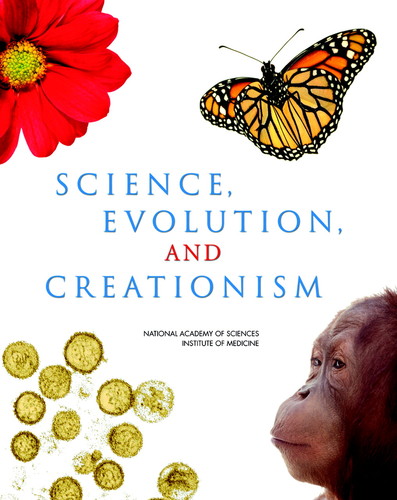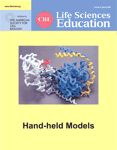A Crash Course in Evolution
Imagine this scenario: During your next cross-country flight, the stranger next to you strikes up a conversation. When she discovers that you are a scientist (or educator), she embarks on a diatribe as to the “flaws” in evolutionary theory, and why alternative theories should be taught in the science classroom. Are you prepared to discuss the lines of evidence that support evolution, and refute the creationist arguments against the theory of evolution?
The year 2009 marks the bicentennial of Charles Darwin's birth, and the sesquicentennial of the publication of On the Origin of Species. World-wide celebrations will focus attention on Darwin's work and the formidable body of scientific research that supports evolutionary theory. However, not everyone accepts this unifying principle of biology, and the festivities are sure to bring evolution back into the public spotlight. Fortunately, for those of us who need an update in our content knowledge, or a resource to pass along to students, colleagues, and friends, the National Academies Press has produced the perfect publication.
Science, Evolution, and Creationism is a superb booklet that presents evolutionary theory in the context of twenty-first century applications. At only 54 pages of text, its conciseness is its strength. The nature of science, and the process of conducting scientific research are focal points for each chapter, and the streamlined format provides a “crash course” on the fundamentals of evolutionary theory.
Rather than opening with a history of evolutionary theory, the text opens with a discovery that underscores the predictive power of the scientific process. A fossil intermediate between aquatic and terrestrial creatures, Tiktaalik, was discovered in 2004. The existence of such a fossil intermediate had been predicted years ago, based on over 100 years of developmental biology research. This particular illustration of the predictive power of science also serves to address the criticisms of some who say that the fossil record lacks intermediary fossils. It also reminds the reader that one did not have to live contemporaneously with such fossil intermediates to predict their existence.
Figure 1. Cover of Science, Evolution, and Creationism.
The classic examples of the lines of evidence that support biological evolution are updated with modern examples from molecular biology that have relevance to the average citizen's daily life. For example, the narrative highlights the evolution of the virus that causes severe acute respiratory syndrome (SARS). This chapter includes current understanding of the origins of the universe, which is often neglected in discussions of biological evolution. Radiometric dating is given an explanatory sidebar, and, after describing the technique, the authors note that some of those who oppose teaching evolution attempt to cast doubt on the validity of this technique. (Simply peruse some of the websites that come up with a search of “radiometric dating” to appreciate the popularity of this topic among anti-evolution efforts.) This chapter crams in the essential lines of evidence that support evolutionary theory, making it clear to the reader that this evidence includes huge volumes of research from widely diverse disciplines.
If you have never been questioned about evolutionary theory, you may not be familiar with common questions from those who do not accept, or are confused about, what exactly evolutionary theory is. Science, Evolution, and Creationism goes beyond the basics of the science, and includes an entire chapter titled “Creationist Perspectives.” This chapter discusses the basics of the currently popular oppositional school of thought, “intelligent design,” and crisply debunks arguments inherent to this philosophy. For example, the fallacy that eyes and flagellae are too “irreducibly complex” to evolve through natural selection is handily addressed with scientific evidence. Excerpts from court cases regarding the teaching of creationist ideas round out this chapter.
A portion of the text that follows the final chapter should be of high interest to any reader interested in the public “controversy” about evolution, religion, and creationism in the classroom. It is a list of frequently asked questions, ranging from the “fairness” of teaching creationism alongside evolution in the science classroom, as an alternative theory, to the idea of “belief.” The authors' responses to these questions are respectful and steeped in the nature of science, thereby providing an excellent model for dealing with such questions when they are encountered.
Science, Evolution, and Creationism would make excellent supplemental material for high school or college students, as well as those wanting an introduction or update to evolutionary theory. The publication is enhanced by a number of beautiful photographs and illustrations. In lieu of a glossary, technical terms are defined in sidebars next to the text. It's a superb primer on evolutionary theory, written for a general audience that conveys the science to the reader through examples of broad interest. The thoughtful writings about creationism, and teaching creationism in the classroom, are useful for everyone—scientist and nonscientist alike. For those who would like more in-depth discussion of any of the topics presented, an extensive resource list of publications and websites is included. I heartily recommend it to all CBE—Life Sciences Education readers, especially educators. It will be one of those resources that they will return to for inspiration again and again.
Science, Evolution, and Creationism can be read online or downloaded as a PDF for free. Single copies ordered online are $11.65 plus shipping, and the website details special discounts on bulk orders.



